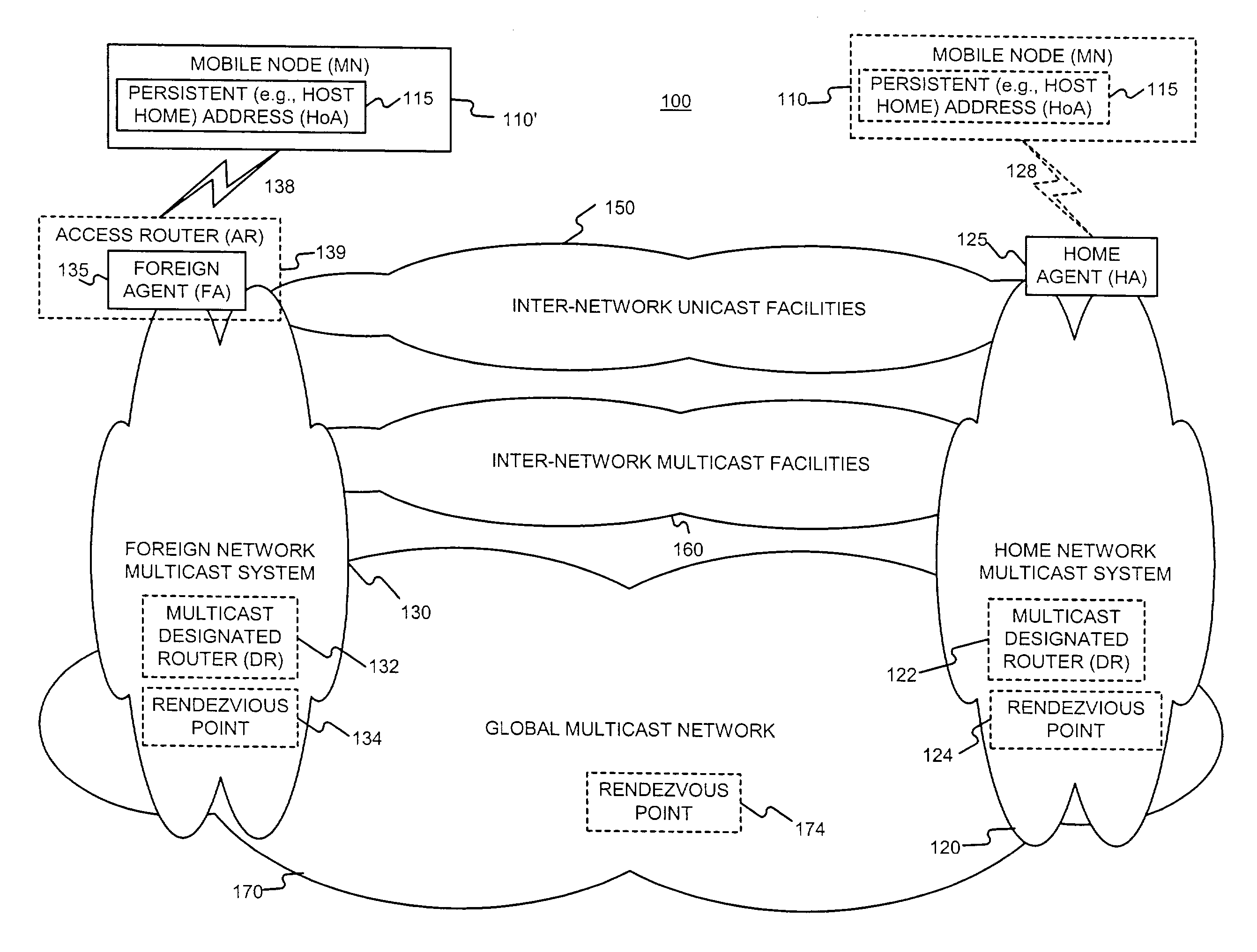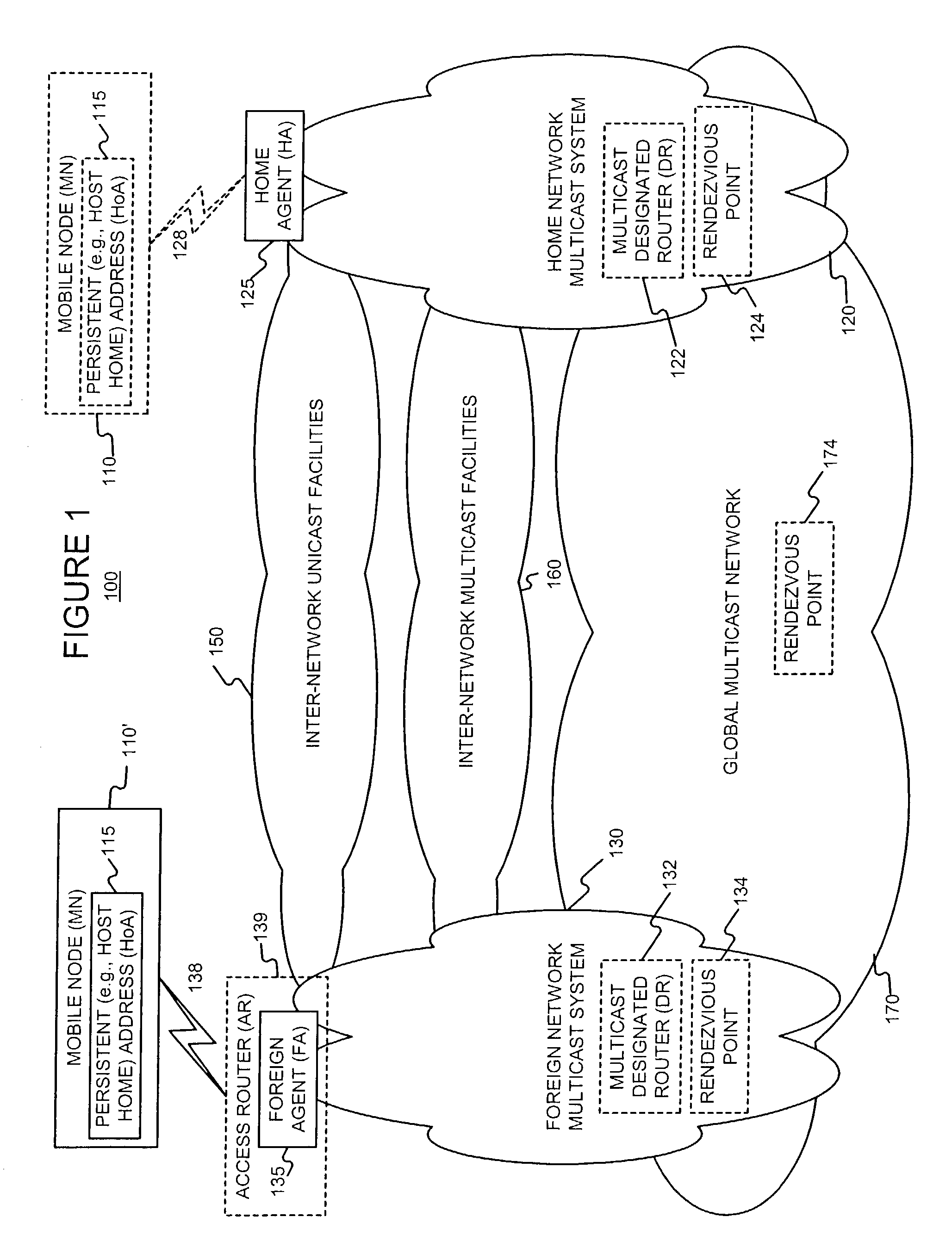Enabling foreign network multicasting for a roaming mobile node, in a foreign network, using a persistent address
a persistent address and roaming mobile node technology, applied in the field of multicasting data, can solve the problems of increasing the scale of wasted bandwidth resources, preventing the mn from being generally a multicast sender, and not allowing the mn to originate multicast traffic,
- Summary
- Abstract
- Description
- Claims
- Application Information
AI Technical Summary
Benefits of technology
Problems solved by technology
Method used
Image
Examples
Embodiment Construction
[0068]The present invention involves novel methods, apparatus and data structures for enabling a mobile host to roam in a foreign network, with multiple access node handoffs, while permitting foreign network multicasting. The following description is presented to enable one skilled in the art to make and use the invention, and is provided in the context of particular applications and their requirements. Various modifications to the disclosed embodiments will be apparent to those skilled in the art, and the general principles set forth below may be applied to other embodiments and applications. Thus, the present invention is not intended to be limited to the embodiments shown and the inventor regards his invention as the following disclosed methods, apparatus and data structures and any other patentable subject matter.
[0069]In the following, an exemplary environment in which the invention may operate is described in § 4.1. Then, operations that may be performed by various devices in ...
PUM
 Login to View More
Login to View More Abstract
Description
Claims
Application Information
 Login to View More
Login to View More - R&D
- Intellectual Property
- Life Sciences
- Materials
- Tech Scout
- Unparalleled Data Quality
- Higher Quality Content
- 60% Fewer Hallucinations
Browse by: Latest US Patents, China's latest patents, Technical Efficacy Thesaurus, Application Domain, Technology Topic, Popular Technical Reports.
© 2025 PatSnap. All rights reserved.Legal|Privacy policy|Modern Slavery Act Transparency Statement|Sitemap|About US| Contact US: help@patsnap.com



